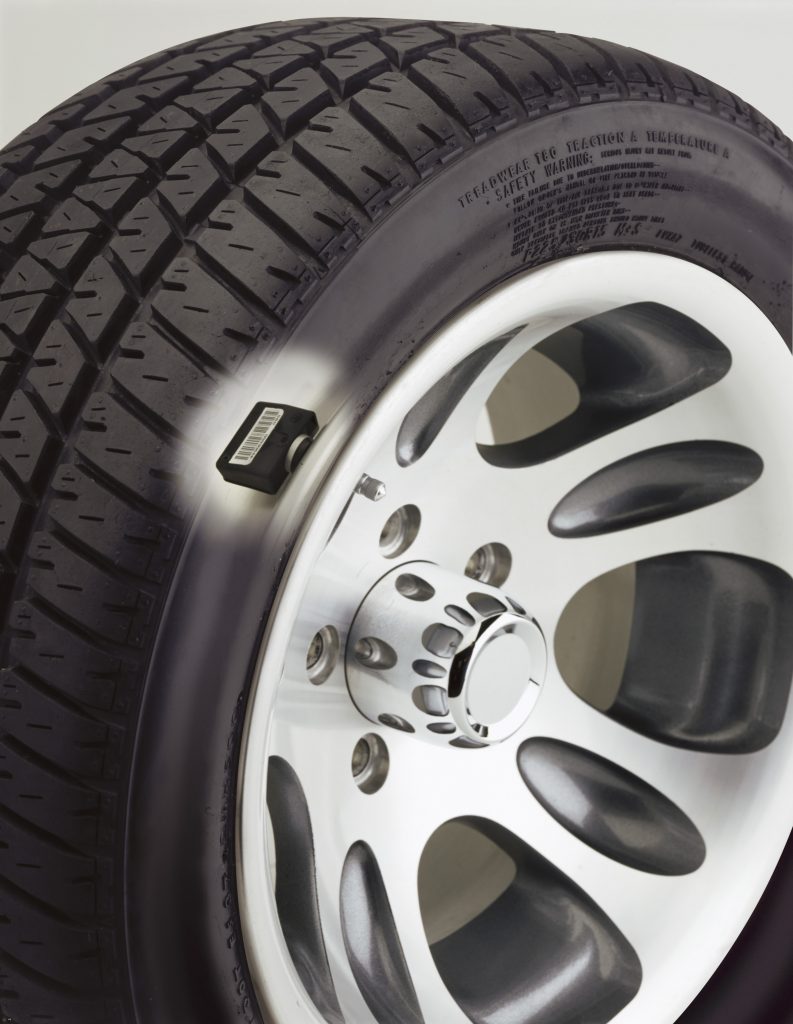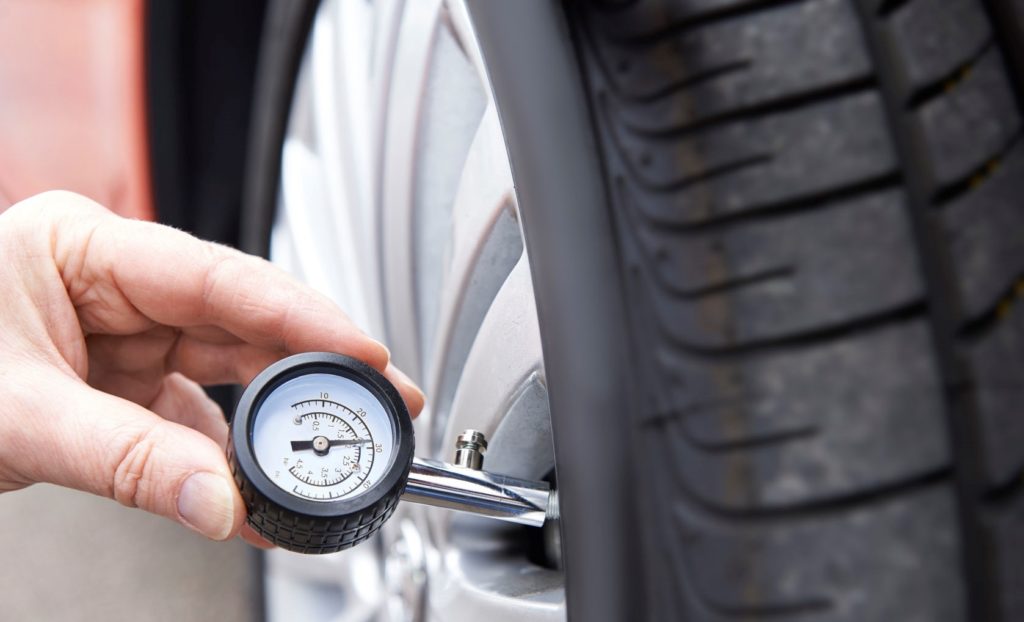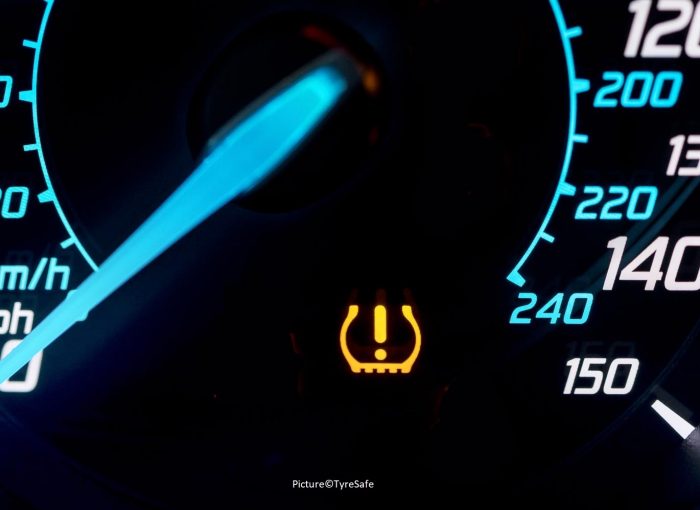Every car on the road that’s 64-reg (2014) or younger will have TPMS or a Tyre Pressure Monitoring System. Although this is intelligent technology, it might not be as intelligent as you think it is.
What is a Tyre Pressure Monitoring System?
This is a system where the tyres’ air pressure is measured. The information is relayed to the car which alerts the driver when any tyre doesn’t have sufficient air in it.
The systems came about because there were fears that without them, drivers of cars with self-supporting or run-flat tyres may not realise when they had a puncture. Run-flat tyres have a reinforced sidewall and can be driven on safely for a limited time with very low air pressures. They’re so effective, many drivers may not know they’re punctured without the monitoring system.
How does indirect TPMS work?
There are two types of tyre pressure monitoring system: direct and indirect. They work totally differently and one is more accurate than the other. Cars are packed with sensors these days. Among those are ABS (Anti-lock Braking System) sensors mounted on each wheel. These monitor wheel speed so that the ABS can stop the wheels locking when you brake heavily.
These sensors can be applied to gauge tyre pressure because the less air a tyre has in it, the smaller radius it has. This means the wheel will have to spin faster to keep up with the other three. An over-inflated tyre will spin slower than three normally inflated tyres.
This information will be relayed back to the car’s computer which then tells the driver that one particular tyre is underinflated.
The trouble with the older indirect systems is that they’re not particularly accurate. Newer systems use more than one reading. They employ sensors from the Vehicle Stability Assist system and in addition to wheel speed, they monitor yaw, g forces, brake pressure, steering angle and outside pressure.
If it detects that present pressures have dropped below a 25% threshold, it alerts the driver to which tyre is at fault. The trouble is, 25% is a lot of pressure. And if you’re relying on your tyres to be only running at three quarters pressure before you put air in them, they’re going to be under pressure for a considerable amount of time. And that is going to be causing them damage.
How does direct TPMS work?
These systems have individual sensors within the tyre, mounted to the wheel rims. They’re frequently part of the valve stem. The sensors send out a signal to the TPMS module telling it how much air pressure they have in them.
These systems are less popular with car makers because they are more expensive. They require special sensors rather than using those that are already present in the car. And the sensors can suffer from battery failure, which means they don’t work and the battery/sensor must be replaced. Most have a life expectancy of five to 10 years.

TPMS needs setting up
Not all drivers realise – or have it explained to them by whoever they buy the car from – that for TPMS to be effective it needs to be set up by the driver. It’s simple: all you do is check that your tyres are all at the correct pressure.
In the car settings menu on the infotainment system you’ll find the TPMS. All you have to do is press a button which will log the correct pressures with the car. If they deviate from those pressures, a warning will sound. If it’s not immediately apparent, check your user manual.
The majority of tyre pressure monitoring systems aren’t particularly accurate: a tyre must lose a lot of air before some sensors register it. In fact, some won’t alert you to trouble until a tyre has lost around a quarter of its air. A tyre deflated by that much could already be running hot at speed and in danger of a sudden deflation (blow out). In addition, tyres that aren’t properly maintained cost the driver by using extra fuel.

Did you know faulty TPMS is an MOT failure?
Between 2015 and 2016, the number of MOT failures due to faulty TPMS rose by 212 per cent, according to official figures. And TPMS won’t register if your tyre has a nail in it or a lump on the side wall – until the tyre pressure starts to drop. It really is no substitute for an old-fashioned visual check.
Also, as we’ve seen TPMS isn’t accurate enough to rely on for checking your tyre pressures. We would advise you check these every couple of weeks. It only takes a few minutes and it could save you money in fuel as well as helping you to get more miles out of your tyres.
Usually when you turn on the ignition, the orange TPMS light will appear on the dash with the other warning lights. It should go out after a couple of seconds. If it doesn’t either the TPMS is faulty or your tyres need attention. Check and reset the pressure of your tyres and the indicator light should extinguish. If it doesn’t, have a professional inspect the tyres more thoroughly and the sensors.

I’ve been writing about cars and motoring for more than 25 years. My career started on a long-departed classic car weekly magazine called AutoClassic. I’ve since pitched up at Autosport, Auto Express, the News of the World, Sunday Times and most recently the Daily Telegraph. When I’m not writing about cars and motoring, I’m probably doing some kind of sport or working in my garden.







